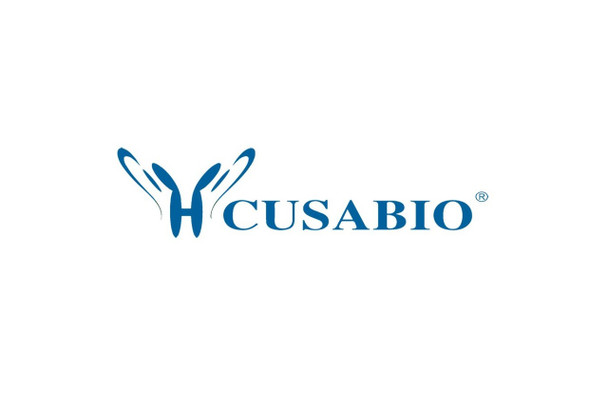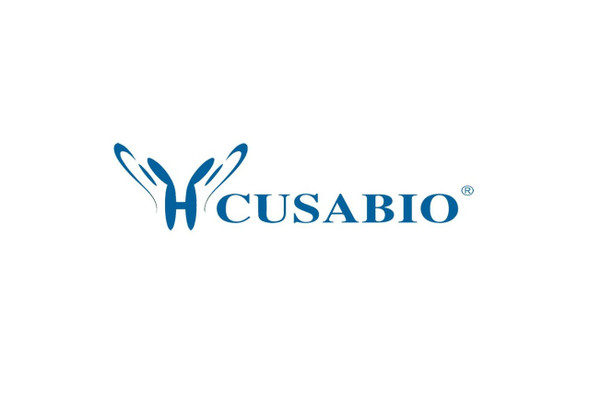Cusabio Human Recombinants
Recombinant Human Estradiol 17-beta-dehydrogenase 11 (HSD17B11) | CSB-EP843318HU
- SKU:
- CSB-EP843318HU
- Availability:
- 3 - 7 Working Days
Description
Recombinant Human Estradiol 17-beta-dehydrogenase 11 (HSD17B11) | CSB-EP843318HU | Cusabio
Alternative Name(s): 17-beta-hydroxysteroid dehydrogenase 11 ;17-beta-HSD 11 ;17bHSD11 ;17betaHSD1117-beta-hydroxysteroid dehydrogenase XI ;17-beta-HSD XI ;17betaHSDXICutaneous T-cell lymphoma-associated antigen HD-CL-03 ;CTCL-associated antigen HD-CL-03Dehydrogenase/reductase SDR family member 8Retinal short-chain dehydrogenase/reductase 2 ;retSDR2Short chain dehydrogenase/reductase family 16C member 2
Gene Names: HSD17B11
Research Areas: Metabolism
Organism: Homo sapiens (Human)
AA Sequence: ESFVKLFIPKRRKSVTGEIVLITGAGHGIGRLTAYEFAKLKSKLVLWDINKHGLEETAAKCKGLGAKVHTFVVDCSNREDIYSSAKKVKAEIGDVSILVNNAGVVYTSDLFATQDPQIEKTFEVNVLAHFWTTKAFLPAMTKNNHGHIVTVASAAGHVSVPFLLAYCSSKFAAVGFHKTLTDELAALQITGVKTTCLCPNFVNTGFIKNPSTSLGPTLEPEEVVNRLMHGILTEQKMIFIPSSIAFLTTLERILPERFLAVLKQKISVKFDAVIGYKMKAQ
Source: E.coli
Tag Info: N-terminal 6xHis-SUMO-tagged
Expression Region: 20-300aa
Sequence Info: Full Length of Mature Protein
MW: 46.8 kDa
Purity: Greater than 90% as determined by SDS-PAGE.
Relevance: Can convert androstan-3-alpha,17-beta-diol (3-alpha-diol) to androsterone in vitro, suggesting that it may participate in androgen metabolism during steroidogenesis. May act by metabolizing compounds that stimulate steroid synthesis and/or by generating metabolites that inhibit it. Has no activity toward DHEA (dehydroepiandrosterone), or A-dione (4-androste-3,17-dione), and only a slight activity toward testosterone to A-dione. Tumor-associated antigen in cutaneous T-cell lymphoma.
Reference: Generation and annotation of the DNA sequences of human chromosomes 2 and 4.Hillier L.W., Graves T.A., Fulton R.S., Fulton L.A., Pepin K.H., Minx P., Wagner-McPherson C., Layman D., Wylie K., Sekhon M., Becker M.C., Fewell G.A., Delehaunty K.D., Miner T.L., Nash W.E., Kremitzki C., Oddy L., Du H. , Sun H., Bradshaw-Cordum H., Ali J., Carter J., Cordes M., Harris A., Isak A., van Brunt A., Nguyen C., Du F., Courtney L., Kalicki J., Ozersky P., Abbott S., Armstrong J., Belter E.A., Caruso L., Cedroni M., Cotton M., Davidson T., Desai A., Elliott G., Erb T., Fronick C., Gaige T., Haakenson W., Haglund K., Holmes A., Harkins R., Kim K., Kruchowski S.S., Strong C.M., Grewal N., Goyea E., Hou S., Levy A., Martinka S., Mead K., McLellan M.D., Meyer R., Randall-Maher J., Tomlinson C., Dauphin-Kohlberg S., Kozlowicz-Reilly A., Shah N., Swearengen-Shahid S., Snider J., Strong J.T., Thompson J., Yoakum M., Leonard S., Pearman C., Trani L., Radionenko M., Waligorski J.E., Wang C., Rock S.M., Tin-Wollam A.-M., Maupin R., Latreille P., Wendl M.C., Yang S.-P., Pohl C., Wallis J.W., Spieth J., Bieri T.A., Berkowicz N., Nelson J.O., Osborne J., Ding L., Meyer R., Sabo A., Shotland Y., Sinha P., Wohldmann P.E., Cook L.L., Hickenbotham M.T., Eldred J., Williams D., Jones T.A., She X., Ciccarelli F.D., Izaurralde E., Taylor J., Schmutz J., Myers R.M., Cox D.R., Huang X., McPherson J.D., Mardis E.R., Clifton S.W., Warren W.C., Chinwalla A.T., Eddy S.R., Marra M.A., Ovcharenko I., Furey T.S., Miller W., Eichler E.E., Bork P., Suyama M., Torrents D., Waterston R.H., Wilson R.K.Nature 434:724-731(2005)
Storage: The shelf life is related to many factors, storage state, buffer ingredients, storage temperature and the stability of the protein itself. Generally, the shelf life of liquid form is 6 months at -20?/-80?. The shelf life of lyophilized form is 12 months at -20?/-80?.
Notes: Repeated freezing and thawing is not recommended. Store working aliquots at 4? for up to one week.
Function: Can convert androstan-3-alpha,17-beta-diol (3-alpha-diol) to androsterone in vitro, suggesting that it may participate in androgen metabolism during steroidogenesis. May act by metabolizing compounds that stimulate steroid synthesis and/or by generating metabolites that inhibit it. Has no activity toward DHEA (dehydroepiandrosterone), or A-dione (4-androste-3,17-dione), and only a slight activity toward testosterone to A-dione. Tumor-associated antigen in cutaneous T-cell lymphoma.
Involvement in disease:
Subcellular Location: Secreted
Protein Families: Short-chain dehydrogenases/reductases (SDR) family, 17-beta-HSD 3 subfamily
Tissue Specificity: Present at high level in steroidogenic cells such as syncytiotrophoblasts, sebaceous gland, Leydig cells, and granulosa cells of the dominant follicle and corpus luteum. In lung, it is detected in the ciliated epithelium and in acini of adult trachea, in bronchioles, but not in alveoli. In the eye, it is detected in the nonpigmented epithelium of the ciliary body and, at lower level, in the inner nuclear layer of the retina (at protein level). Widely expressed. Highly expressed in retina, pancreas, kidney, liver, lung, adrenal, small intestine, ovary and heart.
Paythway:
Form: Liquid or Lyophilized powder
Buffer: If the delivery form is liquid, the default storage buffer is Tris/PBS-based buffer, 5%-50% glycerol. If the delivery form is lyophilized powder, the buffer before lyophilization is Tris/PBS-based buffer, 6% Trehalose, pH 8.0.
Reconstitution: We recommend that this vial be briefly centrifuged prior to opening to bring the contents to the bottom. Please reconstitute protein in deionized sterile water to a concentration of 0.1-1.0 mg/mL.We recommend to add 5-50% of glycerol (final concentration) and aliquot for long-term storage at -20?/-80?. Our default final concentration of glycerol is 50%. Customers could use it as reference.
Uniprot ID: Q8NBQ5
HGNC Database Link: HGNC
UniGene Database Link: UniGene
KEGG Database Link: KEGG
STRING Database Link: STRING
OMIM Database Link: OMIM









